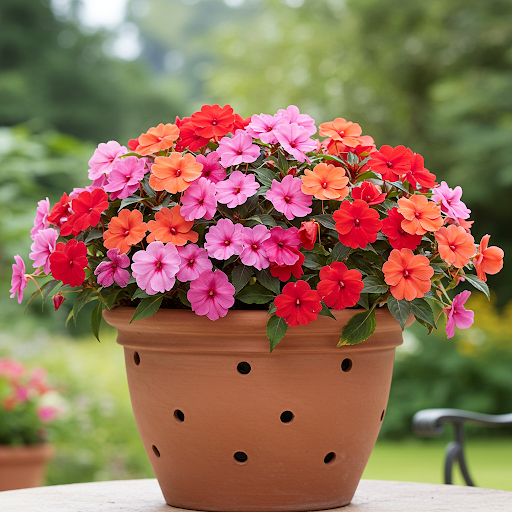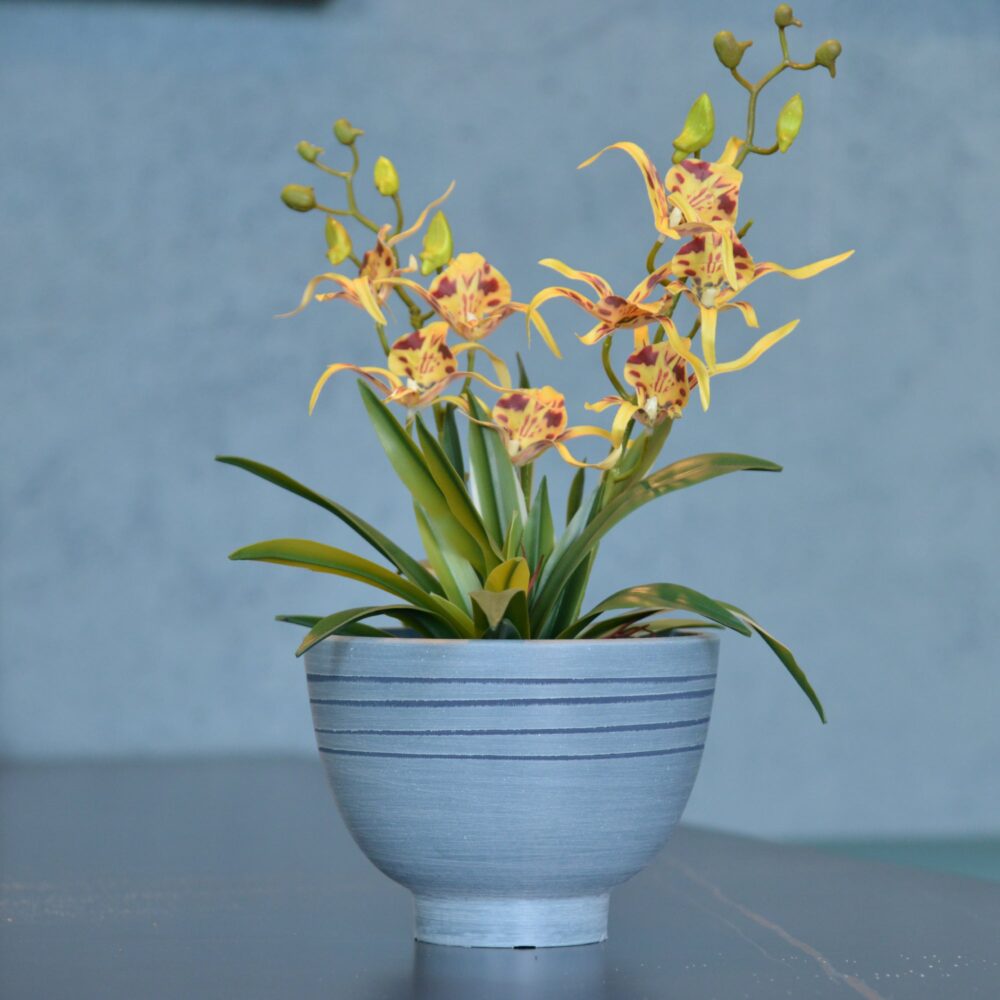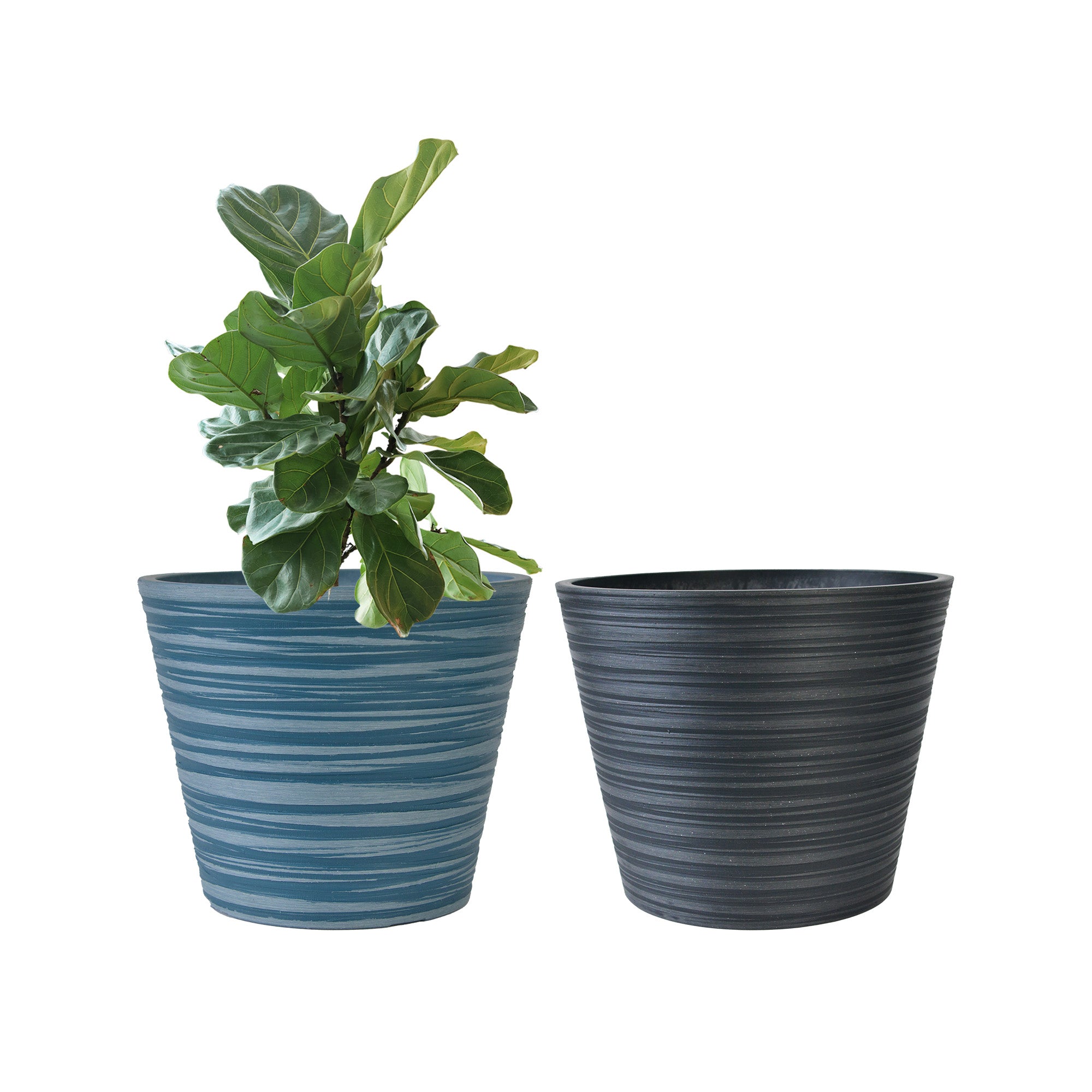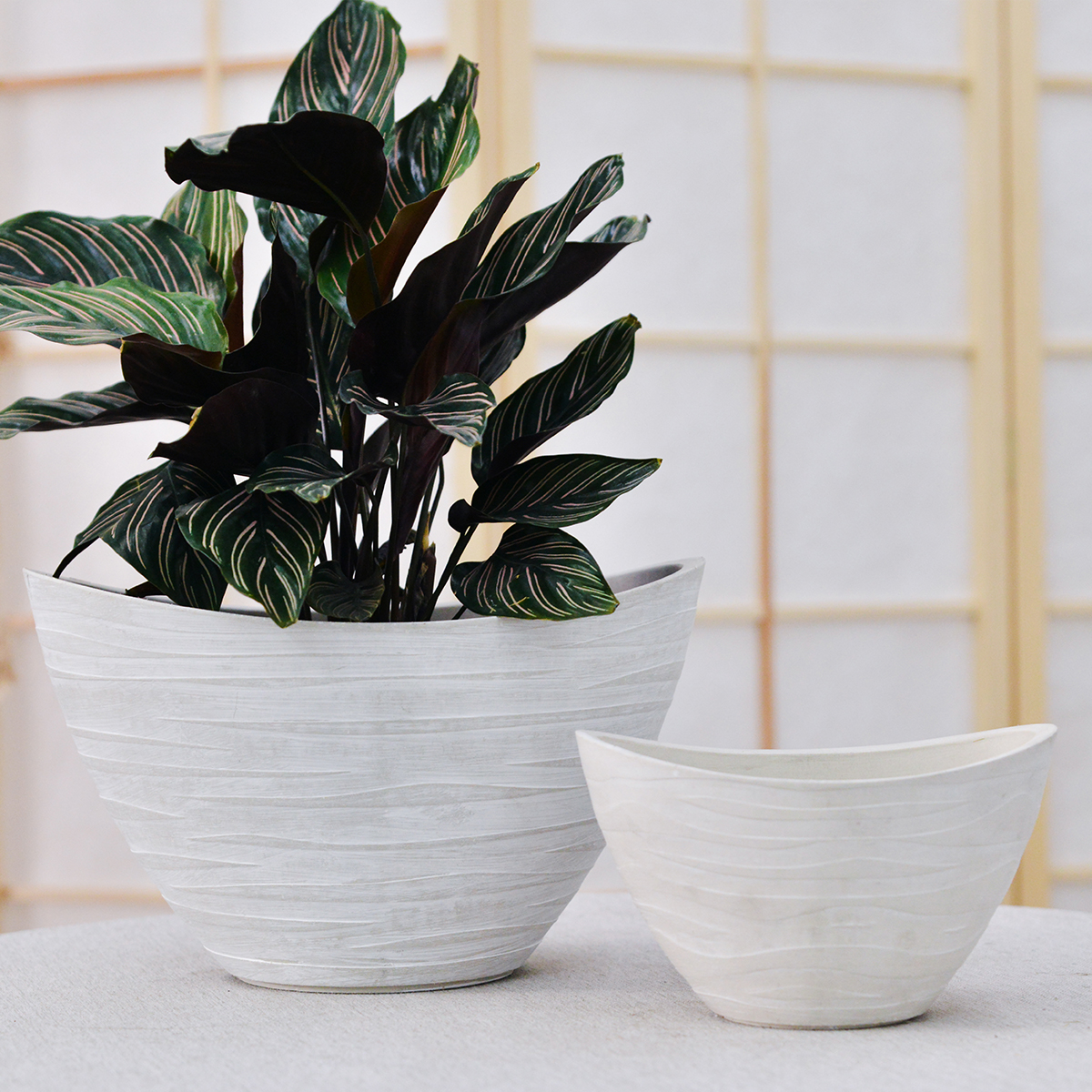Impatiens in Pots: The Ultimate Guide to Shade Container Gardening with Impatiens Flowers
Want to brighten up your shady porch, patio, or garden with a burst of continuous color? Impatiens, often called “Busy Lizzies”, are a quintessential choice for outdoor container gardening in shaded locations, prized for their non-stop blooms, wide array of vibrant colors, and exceptional shade tolerance. From classic bedding impatiens to larger New Guinea impatiens, these cheerful flowers are perfect for bringing life and color to areas where sunshine is limited. This comprehensive guide will provide you with everything you need to know to grow impatiens successfully in outdoor pots, from selecting the best varieties and containers to mastering essential care techniques for a season-long display of impatiens beauty.

Impatiens
What are Impatiens (Impatiens)?
Impatiens (Impatiens) is a genus of over 1,000 species of flowering plants, belonging to the family Balsaminaceae. Native to the Northern Hemisphere and tropics, impatiens are overwhelmingly popular annual bedding plants (though some are perennial in very warm climates) renowned for their prolific and continuous flowering throughout the growing season, even in shade. Impatiens flowers are characterized by their flat, spurred shape and come in a wide spectrum of colors, including shades of pink, red, white, coral, orange, purple, and bi-colors. They are broadly categorized into types such as Standard Impatiens (Impatiens walleriana), New Guinea Impatiens (Impatiens hawkeri), and SunPatiens (Impatiens x hybrida). Impatiens are cherished for their exceptional shade tolerance, long blooming season, vibrant colors, and ease of care, making them a go-to choice for brightening shady gardens and containers.
Are Impatiens (Impatiens) Good for Outdoor Pots?
Yes, Impatiens (Impatiens) are ideal for outdoor pots and container gardening, especially in shade to partial shade locations. Their compact, mounding, and sometimes trailing growth habits make them perfectly suited for filling pots, window boxes, and hanging baskets with abundant color. Impatiens are shade lovers and will thrive in locations where other sun-demanding annuals may struggle, providing a continuous and vibrant floral display in shadier corners of your outdoor spaces. Their ease of growth and wide color range make them a fantastic choice for container gardens of all styles, particularly for bringing color to porches, patios, and balconies that receive limited sunlight.
Ideal Growing Conditions for Impatiens (Impatiens) in Pots:
- Types of Impatiens for Pots: While all impatiens types are suitable for pots, consider these popular and reliable choices for container displays:
- Standard Impatiens (Impatiens walleriana): Also known as bedding impatiens or Busy Lizzies, these are the classic shade impatiens, known for their compact, mounding habit and profusion of small to medium-sized flowers. Best for shade to partial shade locations. Available in a wide range of colors. Excellent for mass plantings, borders, and general container use in shady spots. Note: Susceptible to Impatiens Downy Mildew in some regions.
- New Guinea Impatiens (Impatiens hawkeri): Larger than standard impatiens, with bigger flowers and more sun-tolerant foliage. Leaves are often bronze or variegated, adding foliage interest. Perform well in partial shade to morning sun, and are more resistant to Impatiens Downy Mildew. Great for adding bold color and foliage texture to shade containers.
- SunPatiens (Impatiens x hybrida): A hybrid impatiens bred for sun and shade tolerance. More robust and vigorous than standard impatiens, with excellent disease resistance, including resistance to Impatiens Downy Mildew. Can be grown in full sun to shade, offering versatility for different container locations. Available in spreading and compact varieties. Ideal for gardeners needing impatiens that can handle both sunny and shady spots.
- Trailing Impatiens: (Varieties within Impatiens walleriana and Impatiens hawkeri): Some varieties within both standard and New Guinea impatiens are bred for trailing or cascading habits, perfect for hanging baskets and spilling over pot edges. Look for series names like ‘Cascadia’ or ‘Rockapulco’.
- Light: Impatiens are primarily shade-loving plants, but light requirements vary slightly by type.
- Standard Impatiens: Thrive in shade to partial shade. Best in locations that receive dappled shade or morning sun and afternoon shade. Avoid hot afternoon sun, which can scorch leaves. Full shade is tolerated, but flowering may be slightly reduced.
- New Guinea Impatiens: Prefer partial shade to morning sun. Can tolerate more sun than standard impatiens, especially morning sun, but still benefit from afternoon shade in hot climates. Full shade is also tolerated.
- SunPatiens: Tolerate full sun to shade. Most versatile in terms of light, but still perform best with some shade relief in very hot afternoon sun, especially in hotter climates. Insufficient light will result in fewer blooms and leggy growth, even in shade-tolerant impatiens. Choose a location for your impatiens containers that provides the appropriate light level for the specific type you are growing.
- Soil: Impatiens need well-draining soil that is rich in organic matter and retains moisture. Use a high-quality potting mix specifically formulated for containers or flowers. Peat-based or coco coir-based mixes amended with perlite or vermiculite are excellent choices. Avoid heavy, compacted soil or garden soil in pots. A slightly acidic to neutral pH (around 6.0-7.0) is ideal for impatiens.
- Watering: Impatiens need consistently moist soil and are not drought-tolerant. Water thoroughly when the top inch of soil feels slightly dry. Water deeply until water drains out of the drainage holes. Do not allow the soil to dry out completely, especially during hot weather. Impatiens are very sensitive to drying out and will wilt quickly if underwatered. However, they also do not like to be waterlogged. Aim for consistently moist, but not soggy soil. Watering frequency will depend on weather conditions, light levels, pot size, and plant size. During hot, sunny, or windy weather, you may need to water daily, especially for hanging baskets which dry out rapidly. Check soil moisture regularly and adjust watering accordingly. Water at the base of the plant to keep foliage and flowers dry and help prevent fungal diseases.
- Temperature: Impatiens are warm-weather annuals and thrive in warm temperatures. They perform best in temperatures between 60°F to 85°F (15°C to 29°C). They are very sensitive to frost and cold temperatures. Plant impatiens outdoors after the last frost in your area and when soil temperatures have warmed up. Protect from temperatures below 50°F (10°C). They can be stressed by extreme heat, so providing some shade during the hottest part of the afternoon in very hot climates can be beneficial, especially for standard impatiens.
- Fertilizer: Impatiens are moderate feeders and benefit from regular fertilization to support their continuous blooming. Fertilize every 2-4 weeks during the growing season to encourage abundant flowers. Use a balanced liquid fertilizer (e.g., 10-10-10 or 20-20-20) diluted to half strength, or a fertilizer specifically formulated for flowering annuals. Avoid over-fertilizing, which can lead to leggy growth and fewer flowers.
Choosing the Right Pots for Impatiens (Impatiens):
- Suitable Pot Types: Impatiens are versatile and can be grown in various pot types, including terracotta, ceramic, plastic, resin, and hanging baskets. Consider these factors when selecting pot types for impatiens:
- Plastic Pots: Lightweight, inexpensive, retain moisture well, available in various colors and styles. Excellent choice for impatiens, especially for retaining consistent moisture. Choose good quality plastic pots that are durable and UV-resistant.
- Resin Pots: Lightweight, durable, available in various styles mimicking terracotta or ceramic, and retain moisture well. A good alternative to heavy ceramic pots, and often offer better moisture retention than terracotta.
- Ceramic Pots: Available in many decorative styles, can add a decorative element to your container garden, but can be heavier and may dry out slightly faster than plastic or resin. Ensure good drainage.
- Terracotta Pots: Porous, allow good aeration and drainage, and aesthetically classic, but dry out very quickly, requiring very frequent watering, especially in hot weather. May be less ideal for impatiens due to their need for consistent moisture, unless you are diligent about watering.
- Hanging Baskets: Ideal for trailing impatiens, create cascading displays of color. Require very frequent watering and fertilization due to their exposed nature and quick drying. Line baskets with coco coir or sphagnum moss to help retain moisture.
- Window Boxes & Long Planters: Excellent for mass plantings of impatiens on windowsills, railings, or as porch planters. Choose boxes with good drainage and sufficient depth.
- Drainage: Good drainage is important for impatiens, although they prefer consistently moist soil. Ensure your chosen pot has drainage holes at the bottom. Avoid pots without drainage holes. Elevating pots slightly can improve drainage and air circulation around the base. Adding a layer of gravel or pot shards at the base of the pot is generally not necessary if using a well-draining potting mix, but can be done for extra precaution, especially in very large or deep pots.
- Pot Size: Choose pot sizes appropriate for the type and mature size of the impatiens you are planting.
- Individual Standard Impatiens: For a single standard impatiens plant, a pot that is 6-8 inches in diameteris a good starting size. For multiple plants or fuller displays, use larger pots or window boxes.
- New Guinea Impatiens: New Guinea impatiens grow larger than standard impatiens and need more space. Use pots that are 8-12 inches in diameter for individual plants, or larger for mixed containers and fuller displays.
- SunPatiens: SunPatiens are vigorous growers. Use pots that are 8-12 inches in diameter for individual plants, and larger for mass plantings or mixed containers. Spreading SunPatiens varieties need more space than compact types.
- Trailing Impatiens (Hanging Baskets & Pots): Hanging baskets should be at least 10-12 inches in diameter, and can be larger for more mature displays. Pots for trailing impatiens should be at least 8-10 inches in diameter to allow for trailing and root development.
- Depth: Ensure pots are at least 6-8 inches deep for most impatiens types. Deeper pots are better for larger New Guinea and SunPatiens varieties.
- Color and Style: Choose pot colors and styles that complement your impatiens blooms and your outdoor décor. Brightly colored pots can enhance the vibrant colors of impatiens flowers, while neutral pots can provide a more understated elegance. Consider using lighter colored pots in sunny locations to help keep soil temperatures cooler.
Essential Care Tips for Thriving Impatiens (Impatiens) in Outdoor Pots:
- Watering: “Keep Soil Consistently Moist”. Water thoroughly when the top inch of soil feels slightly dry. Do not allow soil to dry out completely. Water more frequently in hot, sunny, or windy weather, and for hanging baskets. Avoid overwatering and soggy soil, but err on the side of keeping soil consistently moist.
- Light: Provide Shade to Partial Shade. Place impatiens pots in a location that receives shade to partial shade, depending on the type. Protect from harsh afternoon sun.
- Fertilizing: Feed Every 2-4 Weeks During Growing Season. Fertilize every 2-4 weeks with a balanced liquid fertilizer or flowering plant fertilizer to encourage continuous blooming. Avoid over-fertilizing.
- Deadheading (Self-Cleaning, but Optional for Tidiness): Impatiens are generally self-cleaning, meaning they naturally drop their spent flowers. Deadheading is not strictly necessary for continuous blooming, but you can remove faded flowers to improve the plant’s appearance and prevent any potential disease issues.
- Pinching Back (Promote Bushiness – Optional): Pinch back leggy stems or overgrown impatiens to encourage branching and bushier growth, especially for standard impatiens. Pinching back stem tips can create fuller plants.
- Pest and Disease Control: Impatiens are generally relatively pest-resistant, but monitor for common pests like aphids, spider mites, and thrips. Impatiens Downy Mildew has become a serious disease issue for standard Impatiens walleriana in some regions. Choose resistant varieties like New Guinea Impatiens or SunPatiens to avoid Downy Mildew. Ensure good air circulation, avoid overcrowding, and water at the base of the plant to help prevent fungal diseases. If Downy Mildew occurs, remove and dispose of infected plants (do not compost). Other fungal diseases like botrytis blight can occur in overly humid conditions. Treat any pest or disease issues promptly with insecticidal soap, horticultural oil, neem oil, or appropriate fungicides if necessary.
- Monitor for Downy Mildew (Especially Standard Impatiens): Be aware of Impatiens Downy Mildew, a serious fungal disease that can devastate Impatiens walleriana. Symptoms include leaf yellowing, downward curling of leaves, and a white, downy growth on the undersides of leaves. If Downy Mildew occurs, remove and dispose of infected plants immediately. Choose resistant types like New Guinea Impatiens or SunPatiens to avoid this disease.
Popular Impatiens Cultivars for Pots (by Type):
- Standard Impatiens (Impatiens walleriana): ‘Super Elfin Series’, ‘Accent Series’, ‘Dazzler Series’, ‘Imara XDR Series’ (Downy Mildew Resistant)
- New Guinea Impatiens (Impatiens hawkeri): ‘Sun Harmony Series’, ‘Celebration Series’, ‘Sonic Series’, ‘Magnum Series’
- SunPatiens (Impatiens x hybrida): ‘Compact Royal Magenta’, ‘Spreading White’, ‘Vigorous Orange’, ‘Compact Hot Coral’
- Trailing Impatiens: ‘Beacon Trailing Series’ (Downy Mildew Resistant Trailing Impatiens walleriana), ‘Rockapulco Series’ (Trailing New Guinea Impatiens)

Impatiens
In Summary:
Growing Impatiens (Impatiens) in outdoor pots is a wonderfully rewarding way to bring continuous, vibrant color to your shady outdoor spaces. Their exceptional shade tolerance, long blooming season, and wide color range make them an ideal choice for container gardeners seeking beauty and ease of care in less sunny locations. By providing shade to partial shade, well-draining potting mix in pots with drainage, keeping soil consistently moist, fertilizing regularly, and choosing Downy Mildew resistant varieties where applicable, you can easily cultivate stunning impatiens displays in pots and enjoy their cheerful blooms all season long, even in the shadiest corners of your garden.
For more detailed botanical information and to explore the diverse world of Impatiens species and cultivars, you can visit the Wikipedia page on Impatiens.
Important Note: Impatiens (Impatiens) are considered mildly toxic to humans and pets if ingested, potentially causing minor digestive upset. It’s advisable to keep plants out of reach of curious children and pets. The primary care challenges with impatiens in pots are providing consistent moisture without overwatering, choosing Downy Mildew resistant varieties (especially for standard impatiens), and providing appropriate shade levels depending on the type. With attention to these needs and regular care, you can enjoy a season filled with the cheerful color of impatiens in your shady outdoor containers.**
KC2-11V
By greenship|2024-08-16T05:39:50+00:00August 16, 2024|Categories: Hand-carving Series|
8 inch/10 inch Planter Indoor Plants, 2 Pack Modern Decorative Plant Pots with Drainage Hole, Cute Bowl Shape Flower Pots
By greenship-seo|2025-04-10T08:03:42+00:00January 9, 2025|Categories: Hand-carving Series|Tags: Decorative Flower Pots, Self-Watering Pots|
Modern Plant Pots with Drainage – Indoor & Outdoor Use (6″ Widths)
By greenship-seo|2025-04-10T06:29:43+00:00February 6, 2025|Categories: Hand-carving Series|Tags: Decorative Flower Pots|
KC3-14A
By greenship|2024-08-16T06:26:30+00:00August 16, 2024|Categories: Hand-carving Series|
Planter 5 in W / 8 in W / 12 in W or Indoor Outdoor Plants, Modern Decorative Plant Pots with Drainage Hole, Decorative Flower Pots
By greenship-seo|2025-04-10T06:37:58+00:00January 16, 2025|Categories: Hand-carving Series|Tags: Decorative Flower Pots|
20YB
By greenship|2024-08-16T05:37:57+00:00August 16, 2024|Categories: Hand-carving Series|






